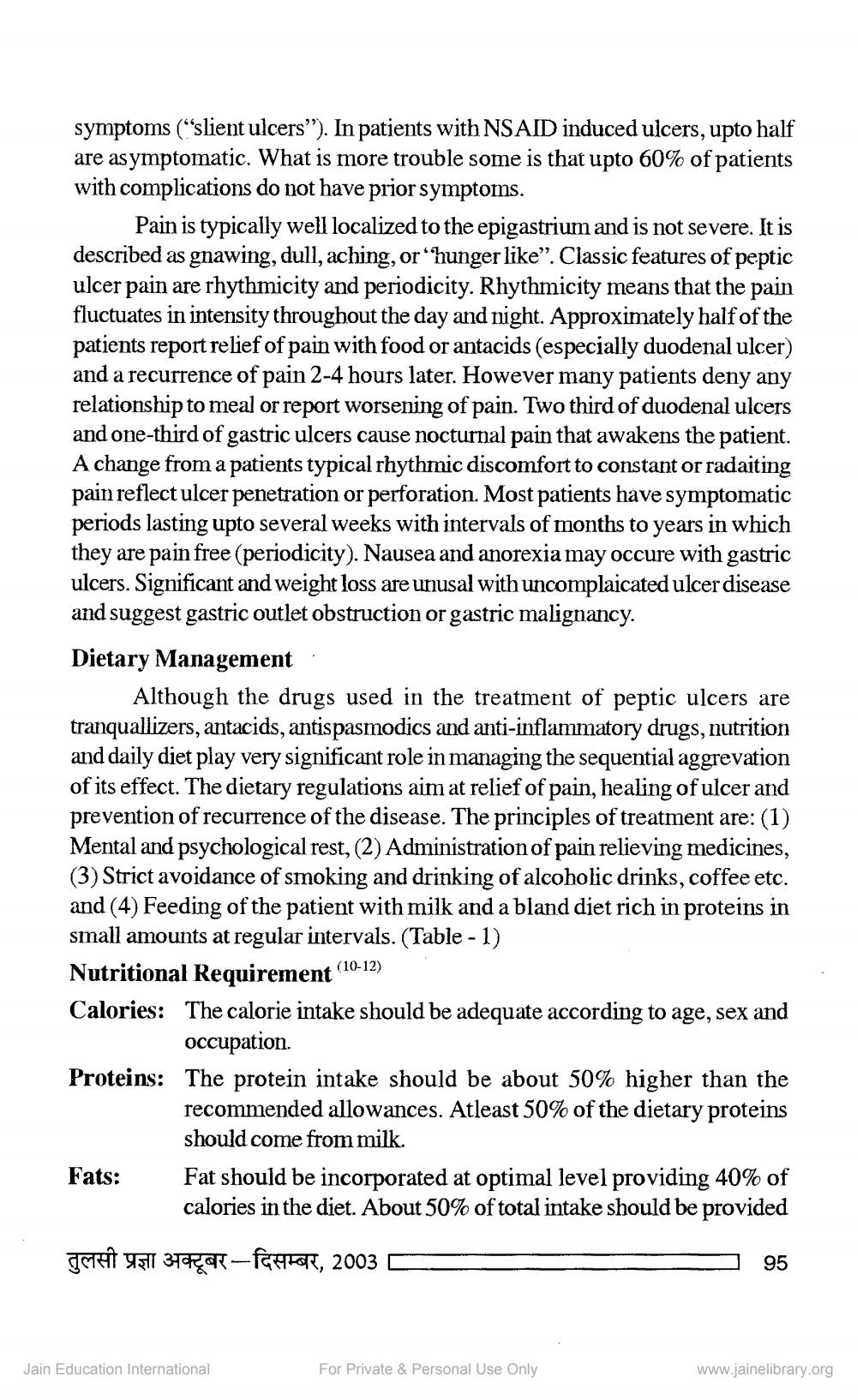________________
symptoms ("Slient ulcers'). In patients with NSAID induced ulcers, upto half are asymptomatic. What is more trouble some is that upto 60% of patients with complications do not have prior symptoms.
Pain is typically well localized to the epigastrium and is not severe. It is described as gnawing, dull, aching, or "hunger like”. Classic features of peptic ulcer pain are rhythmicity and periodicity. Rhythmicity means that the pain fluctuates in intensity throughout the day and night. Approximately half of the patients report relief of pain with food or antacids (especially duodenal ulcer) and a recurrence of pain 2-4 hours later. However many patients deny any relationship to meal or report worsening of pain. Two third of duodenal ulcers and one-third of gastric ulcers cause nocturnal pain that awakens the patient. A change from a patients typical rhythmic discomfort to constant or radaiting pain reflect ulcer penetration or perforation. Most patients have symptomatic periods lasting upto several weeks with intervals of months to years in which they are pain free (periodicity). Nausea and anorexia may occure with gastric ulcers. Significant and weight loss are unusal with uncomplaicated ulcer disease and suggest gastric outlet obstruction or gastric malignancy. Dietary Management
Although the drugs used in the treatment of peptic ulcers are tranquallizers, antacids, antispasmodics and anti-inflammatory drugs, nutrition and daily diet play very significant role in managing the sequential aggrevation of its effect. The dietary regulations aim at relief of pain, healing of ulcer and prevention of recurrence of the disease. The principles of treatment are: (1) Mental and psychological rest, (2) Administration of pain relieving medicines, (3) Strict avoidance of smoking and drinking of alcoholic drinks, coffee etc. and (4) Feeding of the patient with milk and a bland diet rich in proteins in small amounts at regular intervals. (Table - 1) Nutritional Requirement (10-12) Calories: The calorie intake should be adequate according to age, sex and
occupation. Proteins: The protein intake should be about 50% higher than the
recommended allowances. Atleast 50% of the dietary proteins
should come from milk. Fats: Fat should be incorporated at optimal level providing 40% of
calories in the diet. About 50% of total intake should be provided
Smest Yz11 37açar-Fahre, 2003
=
95
Jain Education International
For Private & Personal Use Only
www.jainelibrary.org




